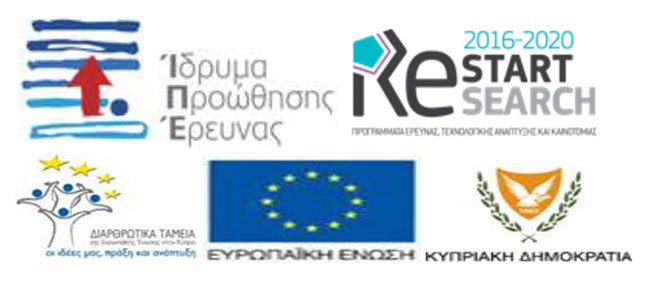
The Astrophysics and high Performance Computing (AHPC) research group of the Department of Computer Science and Engineering of European University Cyprus joined forces with the Laboratory for Human Brain Dynamics (LHBD) of AAI Scientific Cultural Services Ltd (AAISCS)
in an inspiring booth at the Researchers’ Night 2019 event, that took place on Friday, September 27th at the Filoxenia Conference Center in Nicosia.
Under the joint booth entitled “What is the relation of the brain with the Universe?”, the two research groups, through several simple interactive activities, demonstrated to the general public how the study of two seemingly unrelated applied sciences, i.e. Astrophysics and Neuroscience can be brought together under the interdisciplinary scientific area of Network Science.
The Researchers’ Night event was organised by the Research & Innovation Foundation (RIF) in collaboration with academic and research institutions as well as other organisations in Cyprus. The event is held annually across Europe and is an initiative of the European Commission which aims to bring researchers closer to the public, to promote the importance of research, technology, and innovation.
In particular the general public had the opportunity to:
- Exploit Network Science in order to visualize the distribution of galaxies in the observable universe, to see relations between activities of brain centers under various stimuli and to find out their best matching other persons in a few minutes time! In particular, the participants could see through powerful visualization tools clusters of galaxies of similar galactic properties, clusters of human subjects of similar brain activity under the same stimuli and to see him/herself in a cluster of other known persons which matches them best.
- Two astrophysical activities were available to the public: The first activity gave the opportunity to the general public to get to know and understand the recent discovery by members of the group of the phenomenon of the destruction of a star by a supermassive black hole, known as a tidal disruption event (TDE). This discovery was recently reported in the journal Science and attracted a lot of interest by various media (e.g. https://www.youtube.com/watch?v=tO5b-J6jzT0). In another astrophysical activity, the participants were challenged to distinguish and classify various astronomical objects and count them as well in an efficient way through parallel algorithms.
- Neuroscience activity: The general public had the opportunity to learn a variety of neuroscience applications related to the recognition of special needs and talents from elementary to deep adulthood, to understand the neuronal mechanisms related to smoking addiction and to learn about recent sleep studies that have given a new interpretation of how brain processes create the image of ourselves.
Results of new, ongoing and recently completed research projects were also presented including the FP7 project Herschel Extragalactic Legacy Project (HELP), the H2020 project CSRC, the GRATOS (EXCELLENCE/1216/0207) project, funded by the Research & Innovation Foundation, the H2020-MSCA-ITN-ETN project “Interdisciplinary connectivity: Understanding and managing complex systems using connectivity science”, (i-CONN) GA:765813, the H2020-MSCA-RISE project “Automatic detection and localization of High frequency Oscillation in Pediatric Epilepsy” (HOPE) GA: 823958 and the H2020 project “Multidisciplinary tools for improving the efficacy of public prevention measures against smoking” SmokeFreeBrain, GA 681120.

